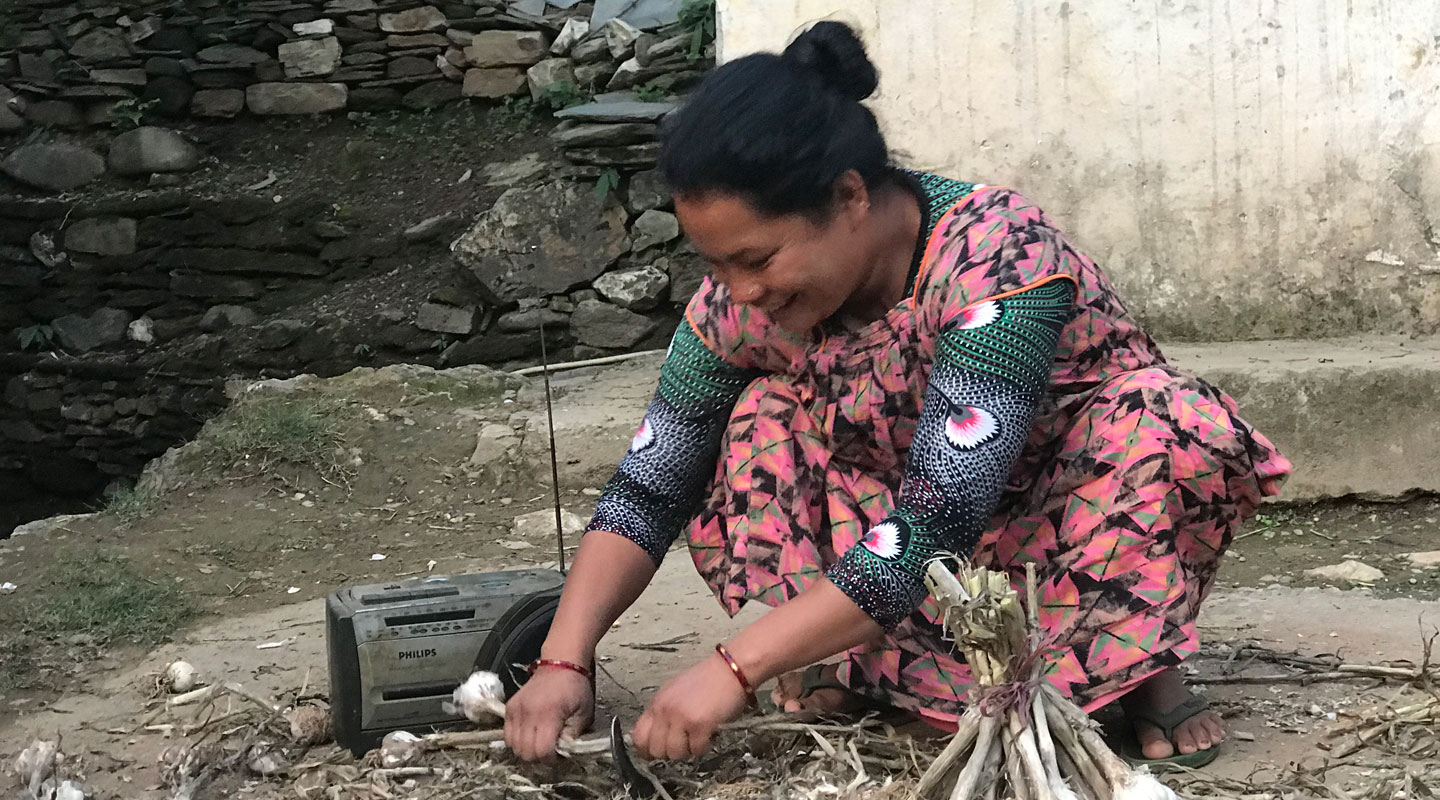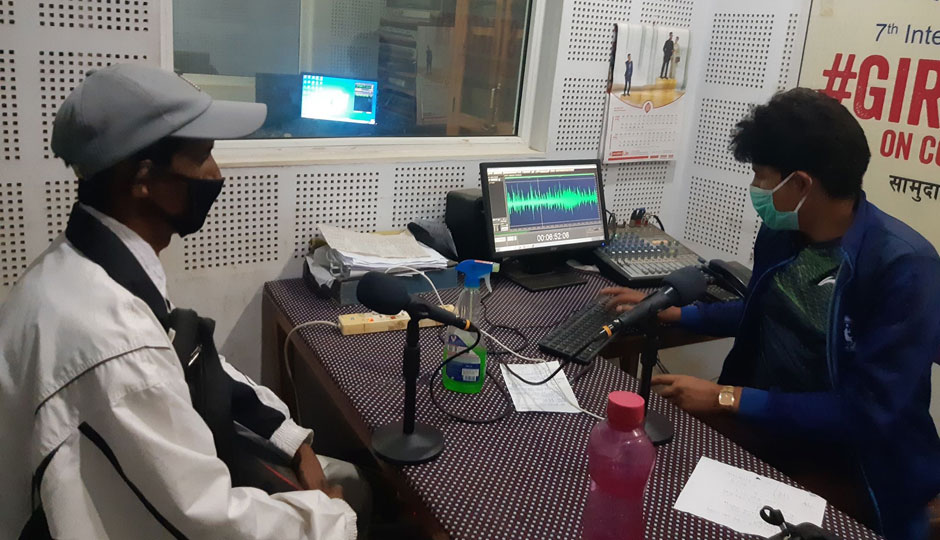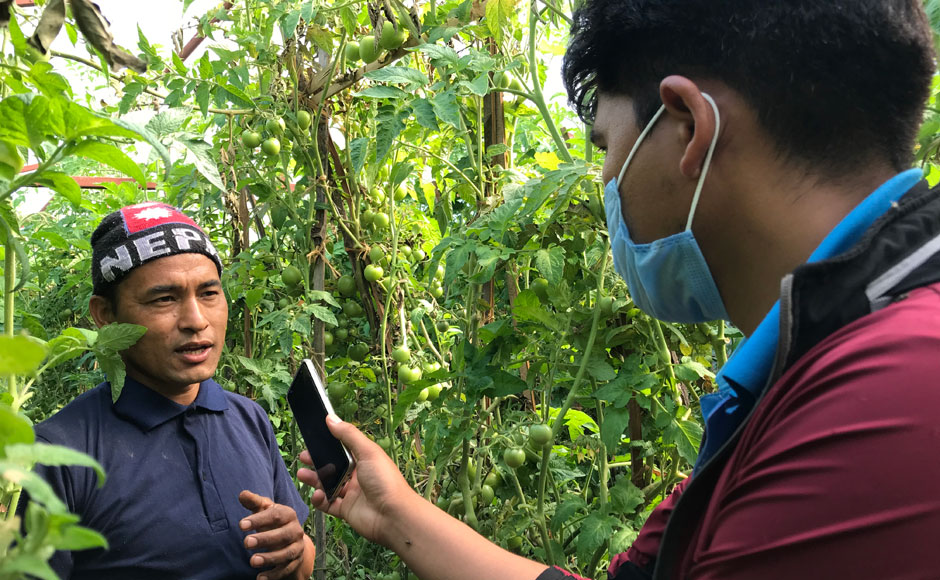How radio came to the rescue in Nepal
IFAD Asset Request Portlet
Asset Publisher
How radio came to the rescue in Nepal
Estimated reading time: 3 minutes
Last March, when Nepal went into lockdown to manage the COVID-19 pandemic, Sarbaraj Bhandari realized he was in a bit of a fix. A goat farmer, he was in the process of upgrading and managing his goat-shed facilities with the help of extension services and technical support provided to farmers participating in the Ministry of Agriculture and Livestock Development-led and IFAD-supported Agriculture Sector Development Programme (ASDP). But when the lockdown imposed restrictions on the movement of goods and people, he, like thousands of other farmers, was cut off from advisory services, throwing his plans into disarray.
The ASDP team initiated an assessment into the impact of the pandemic on the lives and livelihoods of rural people in Nepal’s Karnali province, where the programme was active, as soon as the lockdown was announced. They knew that it would have an impact on agricultural production, harvesting, supply of agri-inputs and food and they wanted to act quickly in order to best support rural communities.
That’s when they learnt of the acute gap in advisory services farmers like Sarbaraj relied on. With severely curtailed travel and social distancing limiting face-to-face interactions, training and knowledge exchange activities came to a virtual standstill. Farmers couldn’t get advice from extension staff, experts, insurance agents, traders and other service providers.
Radio came to the rescue. Most rural households have radio sets, and many received FM transmission. From the first week of May 2020, three local FM radio stations - Sanobheri FM, Sanopaila FM and Dhrubatara FM – started airing a 30-minute show twice a week, with support from the local government, to plug that gap. The show aired early morning or late evening, when farmers were likely to be home and able to listen, and focused on a range of subjects: advisory services, expert interviews, farmers exchanges, updates on local government policies, plans and activities through municipalities, provincial programmes and technical messages. The advisory services included information on good agriculture practices, pest and disease management, locust attacks, input supply management and market facilitation, as well as information on insurance and cooperative management.

Sarbaraj found out about the radio show from the programme staff, and started listening. He found that not only was he able to adopt new practices in goat-shed management, the show helped him get used to new technologies and practices. “I started intercropping ginger and legumes with maize after learning about it on the radio. Not only did that improve the productivity of my maize crop, I also started earning additional income from selling my ginger,” he said.
Narendra Rana, a farmer from Rukum, added that he was able to control the fall army worm infestation using treatment methods suggested by experts who appeared on the show. He also managed locust infestations by using local solutions, such as creating a lot of noise, outlined on the show. Narendra also benefitted from information about off-season production of onion and other vegetables to make up for supply deficits. “I run a nursery, so when I heard that farmers were looking for onion saplings, I started growing more to supply it to them. The demand was so high I wasn’t able to meet it!” Narendra was invited on the show to share his experiences.

Sarbaraj and Narendra are two of the more than 15,000 farmers estimated to have tuned in to these shows. The episodes were pre-recorded, but provided an opportunity for the farmers to interact with the experts as well. They could call the station at any time with their questions, which would then be put to the experts, and both the question and the answer would be aired during future episodes.
The shows were a hit with others as well. Dev Kumar Oli, the host of the show for Sanobheri FM, said that the initiative was so successful and received so many call-ins from farmers that the municipal government has asked the station to cover agriculture on its local news show on a regular basis. And Mohan Budhathoki, who works for an insurance company and was invited to speak about the benefits of agriculture and livestock insurance, including subsidies provided by the Government of Nepal, was so pleased with the number of farmers he was able to reach that he has recommended to his company that they launch a similar radio show of their own.
This experience is a reminder that in many parts of the world, radio remains an indispensable tool for sharing and communicating news and information, especially where support for rural extension services may be dwindling. In particular, radio is an effective – and reliable – source of news and information during times of crises such as the COVID-19 pandemic, when trust is in short supply.
Publication date: 12 February 2021